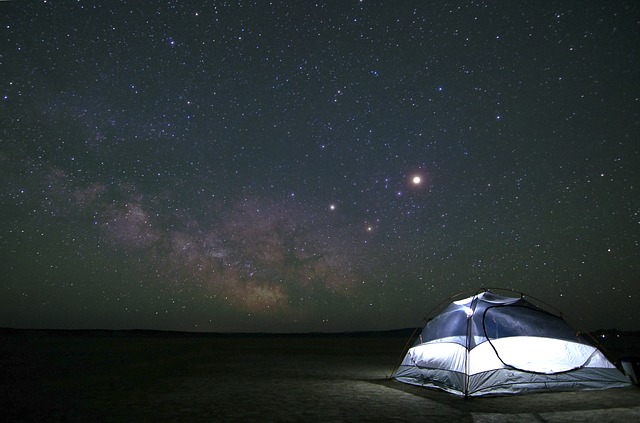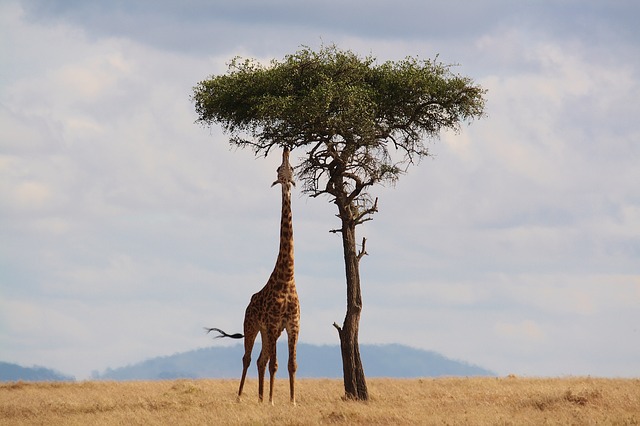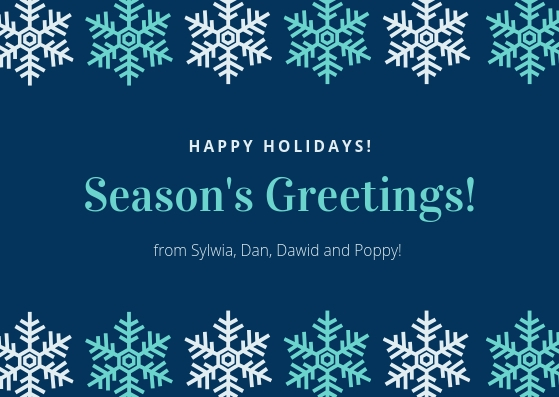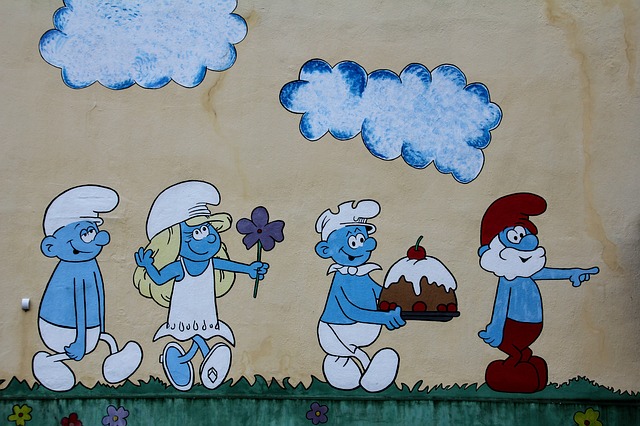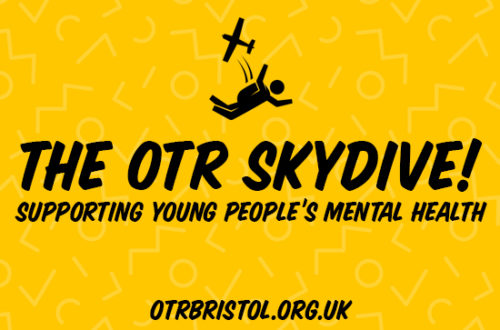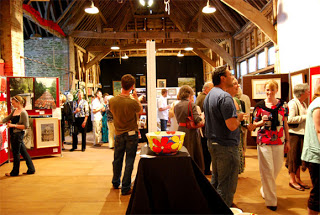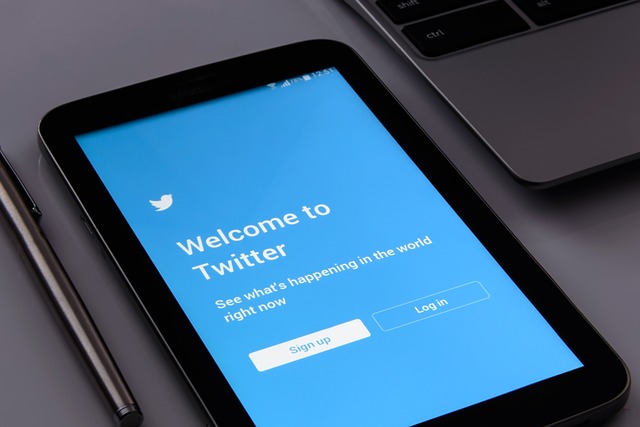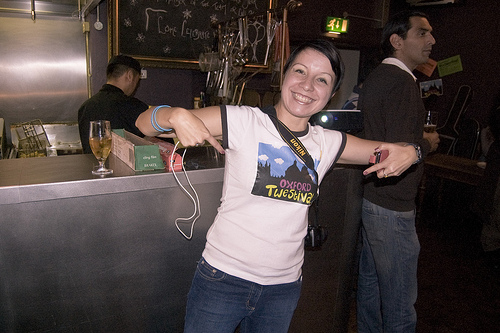-
Public vs. private
 As I am finishing “Public Parts” by Jeff Jarvis I cannot help but wonder why the Internet is still so alien to many and we some of us feel so insecure? I am looking back at my last weekend in Moldova too. The park pictured above is located in the centre of Chişinău and it has a pretty good public wifi. Even though I am a geek myself after few years of living in the UK and struggle for a good wifi access in public places I actually found the image of that bench in the sunlight with free public wifi almost futuristic. Even though rationally thinking I know I should not. The web is yet another public place. It is said to be the next thing, the monster for some. For another great opportunity. For our kids simply another part of their reality. It is the extension of our lives and we need to start looking at it this way. I like many points made by Jarvis in his book and I really like his approach in talking about potential and not risks of publicly available information. Very often I myself have to help my friends and clients to demystify the web by questioning their irrational fears about technology. The web is OUR public bench and we should make the most of it! It is ours to take and to own, collectively. And once we are there what is the borderline of our online openness? Even here I agree with Jarvis that we need to think about the web as yet another PLACE, not so much different from a square or a park. “Sharing too much is sharing that what you know you will regret sharing”. Just like a bench in a park – “web is just a place filled with people”.So let’s sit down and talk, share stories, mind the context and focus on how we build relationships through our stories, our honesty and openness.
As I am finishing “Public Parts” by Jeff Jarvis I cannot help but wonder why the Internet is still so alien to many and we some of us feel so insecure? I am looking back at my last weekend in Moldova too. The park pictured above is located in the centre of Chişinău and it has a pretty good public wifi. Even though I am a geek myself after few years of living in the UK and struggle for a good wifi access in public places I actually found the image of that bench in the sunlight with free public wifi almost futuristic. Even though rationally thinking I know I should not. The web is yet another public place. It is said to be the next thing, the monster for some. For another great opportunity. For our kids simply another part of their reality. It is the extension of our lives and we need to start looking at it this way. I like many points made by Jarvis in his book and I really like his approach in talking about potential and not risks of publicly available information. Very often I myself have to help my friends and clients to demystify the web by questioning their irrational fears about technology. The web is OUR public bench and we should make the most of it! It is ours to take and to own, collectively. And once we are there what is the borderline of our online openness? Even here I agree with Jarvis that we need to think about the web as yet another PLACE, not so much different from a square or a park. “Sharing too much is sharing that what you know you will regret sharing”. Just like a bench in a park – “web is just a place filled with people”.So let’s sit down and talk, share stories, mind the context and focus on how we build relationships through our stories, our honesty and openness. -
The Future of Journalism – Happy 20th Birthday to EJC!
I had the privilege to be invited to the 20th Anniversary of European Journalism Centre today in Maastricht. I would like to – first of all – thank all organisers for the invitation! I am really impressed with the quality of today;s presentations – and trust me I do not usually say that! I tend to go to a lot of conferences full of pretty stuffed agendas but today was really intense and entirely challenged my assumptions about the education of journalism! I met some amazing people today and had the opportunity to listen to really interesting talks. So here it goes:1. Howard Finberg – keynote notes:
Journalism is still undervalued so where does it leave us? The Economic model of journalism and act of journalism itself are now growing separate- so what values of journalism matter to us? News consumption is increasing however the tech companies capture 68 % of all US ads. Journalism education is at its own critical moment.
We need to innovate. We need to be aware of disruption and disruptive innovation. The Internet will and is changing education all over various industries (economic challenges, academic challenges). What is the value of journalism degree? Survey over 1,000 participants – its results show a gap between academia and other groups of a journalist which could be perceived as a problem but is also a challenge. (A third of academic professors agreed that journalistic education is not keeping up with the changes in the industry.)
“Sometimes the industry itself is not keeping up with the changes happening in journalism!”
Tips: Innovate, create new ways of using software, teach collaborative work, connect to the whole university, expand the journalism schools as community agents.
How about our non-customers? What do they want?
Now is the time to reinvent the industry.
We need more schools not less! We are at the point where we need true educational innovation. Some will do it well and some will be left behind.My thoughts: I agree that we need to re-evaluate journalism, but is this not the case with any other industry affected by social media? I do not think we need to re-evaluate it now – we simply need to get used to notion of continuous development, questioning, improvement and again – development. The ever-changing nature of social media and other online processes and technologies requires flexibility we are not used to it – we need to change the way we embrace the change!2. Josh Friedman, Oleg Shchedrov, Paul Bradshaw, Mercedes Riederer
Oleg: In Russia, people can elaborate for hrs on multimedia journalism but they cannot tell what is the story. Students need to learn technology and understand the trends.
Q: Should we forget the tech and go only theory, content expertise?
Oleg: No, they need to know this but also know how to identify new trendsPaul: There are students who spend their time on the university as if they were there on one stage of factory line whereas they need to be more flexible to keep up with tech.
Josh: The idea of telling stories and all aspects of journalistic ethics is there, but teaching people the new platforms is challenging because people who understand the new tools can go to other industries and earn more money.
Paul: He expects his students to decide how to approach the innovation.
Josh: But how will you maintain the standards?
Oleg: now we are teaching combined approach between traditional and modern news sharing.
Here I make a public note of how social media and journalism have similar challenges, we need to sit down, work together, clarify distinctions and similarities, then build or rebuild the new educational models accordingly.3. Ove Joanson, Robert G Picard, Vincent Partal, Mark Johnson, Staffan Sonning
Ove: Journalism is highly overrated. I never had a problem to find a journalist who was good at journalism, but I had a problem with finding journalists who were good at anything else.
Vincent Partal – experiences of the oldest online newspaper in Europe from Catalunya.
They decided that the journalism is changing so they have to change too. They began to think about it and found out that the basics of journalism are to tell the stories, do it well and serve the community, ask the community what they really want to know. Their decision was to open every door – even offline moved their office to the city centre and opened the office to the public. Increased their activity in social media, understood that they are not only a page on FB but in many channels under the same brand. They have large screens in the newsroom to show twitter feed, they work on data intelligence, to have a live understanding of what people are reading. 35% increase in readership was noticed last year, but they also had to understand why people get involved with their brand. The idea of community to become managers at their newsroom for one day- that changed everything. Readers also identifying that something is changing, authors understood that they need to think outside of the box. Last July decided to move forward – identify relationship between their community and them via this new tool. Readers recognised the professionalism on the newsroom but newsroom also realised that readers are real people. ( name of the project ? ) it has many ways of interacting with members. Morning email update to approx 2000 community members who can react to it and navigate the newsroom to more interesting, relevant topics. Finally the money: they decided to ask people to pay via crowd funding. The wall concept and premium concept didn’t work. We decided to say- no, pay for nothing, for the concept, for your belief that media is important to you. In December we identified the daily cost as 16cents. The only motivating factor here is readers consciousness that they are contributing to maintainable of the newspaper. We learned two things. 1. You can take nothing for granted- you are not leader, just let people tell you what they want. 2. If people tell us what they want we can do a better journalism and have a better company.
Mark Johnson from The Economist – Reasons that pull journalism together.
As there is more information out thee the role of curation and providing context becomes more important. Finishability is a crucial concept here. The other good news we think that the world is getting smarter. This is the age that values intelligence more than any time before. The Economist firmly believe that people will continue paying the not for quality of news but quality of news analysis. Most of their revenue comes from subscriptions. Social media was a massive success for them to reach out and look for new readers. 10% of traffic to the main website comes from social media more importantly it’s the type of readers who would not come to the site from other, more traditional sources of advertising. They see tablets as important future for them. People have the same attention span as offline. Apps also help them reach new audience and subscribers.
Staffan:
Most pessimistic reported at Swedish radio – publicly founded radio. So what are the challenges in the new media landscape? How do you uphold ethical standards in this ever changing media landscape? In Sweden media landscape is largely self-regulating, which so far had been working really well. But what happens if the self regulating system is going to fail? Will the regulators come back and step in without clear understanding o fine media landscape? I see clear changes in ethics of news sharing in the age of new media. There are in some cases rules for printed media and other rules of online media. This has created a new and potentially damaging situation in the media. So the traditional journalists are in slippery slope when facing the competition with the new media.Robert G Picard Oxford university Reuters Institute:
Issues behind the practice of journalism is their focus.
Business models of journalism was a key element of discussion but it’s wrong headed. But business models are not about how much money you get but how you generate the value to your stakeholders.
There are now so many other news providers. It has effect of advertisers too.
This big change now means we need to reconsider business model – look at the way we provide news, all the conventions we use to deliver the news and look at the conditions in which we deliver the news. If we all do it the same way we will not survive. So the news organisations have to make themselves more unique, more different, provide commentary that provides the needs of readers, at times when people want to read it not when news organisations can provide it. News organisations are not doing it really well, apart from timing. We need to start thinking not about what we need but what our readers want so that the money backs us up. The fundamental problem with journalism is the fact we do not like audiences along the way. E have bad conceptualisation of the public- the ignorant mass that we have to educate. We think we need to lead them to the right roger and turn them in proper citizens. This is a very dismissive view which makes it difficult to work with the digital media because this is not the way trust and mutual respect works online!
So what we see is the fact that those organisations that work well are the ones that respect their audiences sometimes even more that themselves.
We now suddenly faced with having to partner with people who are more specialist in topics we post than we are! We need to find a way to connect with. Them and believe that audiences will not come via one single product in one way to our content. Even under fully controlled conditions people will do whatever they want to do.
So we need to think how we are going to serve about their needs more than ours.
We need to think about how we become better part of the lives of people we are dealing with. He do we find out what is important for them and how do we serve those needs?
We have to start thinking about fighting the disconnect we have with readers.
We also need to think about the information we do not consider important but are important for the community. There are problems in how we conceptualise what is important in news
No matter what happens we will not come whack to the riches of beginning of the century but this is not actually so bad. It’s not a question of how much resources you have but HOW we spend the resources we have wisely.
Rethinking the model of news needs to be done by elevating the role of readers and the way we provide them with value.Personally I cannot help but agreed with all of the panelists from the last session, but I still think we should all sit down with people from other, similar areas and discuss what connects us and what distinguishes us from each other. We, bloggers, have the same issue with building reputation on-line in rapidly developing industry which for now (outside of US) is not regulated! So how do we sustain transparency and trust in what we write? How do we differentiate ourselves from others and how do we really differ from traditional journalism? Is there need for traditional journalist education and clarifying the terms like “fact”, “objectivity”, “telling stories”, “edited content”? I personally think yes, we need more and more specialist and really established journalist to show us the way so that then if we blog we follow their standards but also shade different, slightly more emotional share on events. I simply think the more views the better, but we still need verified truth. Or am I seriously naive here?Let me know what you think!(all tweets from the event woth more notes here) -
Booked my hotel in Nairobi
…and got inspired by the work of “See Africa Differently” once again! We live with so many assumptions in our heads. I cannot wait to see and discover Kenya. I know GV Summit is going to provide us with great insights into the tech and citizen journalism side of things, but just to walk the streets, to discover coffee plantations and simply talk to people is something I am really looking forward to. I want to shape my own image of Nairobi. And yes, learn more facts!;)
-
On storytelling – “Relative Stranger: A Life After Death”
I find it really difficult to title this post, but ultimately I think it’s mainly about the importance of storytelling. I have recently read “Relative Stranger: A Life After Death”by Mary Loudon. The book is a personal account of a woman’s journey to re-discover her relationship with one of her sisters…just after receiving the news that her sister passed away. It’s a well written, very moving story which on many pages makes you stop and read a sentence over and over again. It’s one of those books you could read with a pencil in your hand to mark your favourite quotes. It’s a story of a journey that many of us at a certain point in our lives might have to take too. It touches upon few problems I myself feel very strongly about family relationships, mental problems of people close to you, systems we live in and society we rely on…and finally the core problem: how do we handle death of our relatives and how do we fill out the gap and all the unanswered questions?
All those notions were really important to me. You can say that the book has changed me a little, made me more sensitive to some issues, crystallised attitudes I had already. But what really is important about this particular book is the context of the story. You see, Mary Loudon is my son’s best friend’s mother. She lives down the road and we meet quite often. I did not connect that she writes books and only about two weeks ago Mary gave me this book to read – it happened to be on her desk when I was around. Reading such a personal account from someone you already “know” is pretty powerful. Mary’s father used to work together with my landlord (both doctors) in the main house of our current property, so when in the book, Mary quoted his diary I felt something I have felt few times in my life: a touch of reality.
Since I was a kid I used to argue the value of fiction and reality with my parents, friends, later teachers. The two are so insanely connected that very often one cannot tell them apart! So as a student I used to rage against all the categorization of authors and books (which obviously did not help my studies!;)). I used to hate boxes we would put the past and contemporary writers. Those I met offline at the time would most definitely hate the boxes they belonged to and prefer to have a drink or a coffee with me. So…when does it leave me now? I know that linguistically speaking we need to categorise things and name them to be able to talk about things but ultimately it is the effect the stories have on us that matters!
Mary’s book combined with few conversations we had in the past (and few very personal events from the last few days) have inspired me to open up and plan writing about topics I have left for my Moleskine so far. It reminded me of the value of storytelling for public consumption. If you tell your story right it can actually shift the boxes in our heads so much that the changes will come. Hopefully for better. It also made me realise that if you want to use the power of storytelling you need to do it right!
-
The Power of Habit…or how to stretch the time
I am finishing “The Power of Habit: Why We Do What We Do, and How to Change” by Charles Duhigg right now. I was listening to this book on my iPhone for the last two weeks in very small chunks to understand, re-think and apply some of the tips made in the book. And I start to feel the effects!
I think I navigated over to this book during my research into the reasons behind my current (or to be more precise) past issues with lack of time. I have originally been a person who really likes to sleep in the morning and stays up late at night to write, but recently I have lost the balance and started thinking about alternative solutions. When I looked at my calendar I realised that all my evening work is dedicated to passions related to my job so really…my brain does not rest at all! Furthermore, I do not have time for what I call unintended creativity: sitting over a cup of coffee and “writing” stories in my head, reading books of no value to my work, etc. All my attempts to go back to hobbies unrelated to the web failed and I did not know what to do. If you are at that point in your life or daily routine it is always helpful to step back and look at it from rather an objective point of view. I counted a number of hours spent on work and other projects, time spent on-line and off-line and realised: I am using the time I have wisely, but I need more of it to balance back my on-line activities with living the life itself! At that point I had to make probably the most drastic decision in my life: I needed to start waking up earlier! Waking up is really a series of activities strongly related to our habits so after a series of failures (it is really hard to get out of bed earlier than you really, really have to!) I understood that I might have to research the topic a bit better. Coming across “The Power of Habit” was somewhat a coincidence but I am really glad I read it, especially the first part explaining the brain activities related to habits, case studies of people who changed their lives by using wise (scientifically proven) processes and general mechanics of habits. So now I feel I am not at the cross roads anymore. I have announced the changes in my sleeping pattern at home – changing habits affect our families. I have started the process of changing my morning habits, finding the triggers of my habits, identifying rewards and changing routine. It’s not easy but I already see the benefits of this shift. My mornings are not as productive as I would like them to be but I have time to live them fully! I think I would gradually stretch them even more and establish early waking as a routine – simply because it works well for me.It’s interesting. “The Power of Habit” contains a great deal of very personal stories. Stories that make your cry or giggle. I am not sure if it was the set of practical tools provided by the book that made me change. I think I feel that it was down to the inspiration I gained from people who suffered and managed (by coincidence or their own choice) to turn their lives on a different, better track. Some changes are really simple and the ripple effect can be very powerful. I am so glad I found this book! -
Evening treat!


I am such a kid! I just love little treats and small changes to our daily routine. We had a few sunny days recently so my boyfriend and I decided to go for a walk and browse around our little town. You would not believe how many secrets a little town can have! That day we have discovered a small show with kitchen equipement and a lot of small but really fascinating gadgets (rolling garlic peeler that looked like a yoyo?!). I came home with coffee stencils from LaCafetiere I did not even know you can get hold off in shops! (Actually you cannot get them on-line!). On a sunny evening a latte was of course a perfect choice! I had a lot of fun and the end results were sweet (specially when served with small pieces of Polish Ptasie Mleczko).


-
How to save time with social media – my top tips.
I know, sounds crazy – specially to some of my friends who see me in front of my mac all the time. If not there then on my iPhone. Or finally if not on the phone…on the iPad….but hey…I can always use the explanation – I need to be on the top of things for work. When actually I am browsing Instagram for inspiration!;)
But seriously – how do you save time with social media? I am sure each of us had at least one example of finding a solution to specific problem much faster on Twitter than through more traditional channels but is crowd-sourcing ideas all? Again I have to refer to my work experience – it has truly be an eye-opener for the last two years and I think I have just now learned to talk about it all. See, majority of people I talk to nowadays start to look for solutions to their major problems with social media: amount of noise and too large networks. And quite often first signs of addiction too;)
Here are my top tips and I would love to hear from my fellow bloggers how they handle their own time management to learn more about it:
1. Have a content plan…
….even if just for tweeting or Facebook updates. To have a content plan means you know what you are using each tool for. I have always used this main blog as my personal journal and as my life changes it changes with me. I am pulling into it all other core presences and here you can keep track of most of my work in other social spaces too. I have a calendar on my wall in which I am writing down a plan for my posts – more or less specific, in the end blogging IS supposed to be fun too;) As for Facebook and Twitter I use them mainly to communicate while I work (I am getting used to managing all my hats at the same time), so the content there will be probably related to the small chunks of time I take off work to rest, to read news or to check an update on something relevant to my passions. I talk about coffee a lot in there;) I take photos and upload them to Instagram or before going to bed (watching popular section on Instagram leaves amazing landscapes in my head for when the dream arrive;)) or when waiting for a coffee. I upload them in smaller chunks because editing takes a little bit of time. I use Qik and Bambuser or podcasting tools only when relevant – for this blog or when travelling, at events. I save stuff in Pinterest boards or on Storify when I feel that I cannot keep up with events real time and know that I will want to use those materials later. I am still trying to work our Google+ as it embraces many other social media activities, so for now it’s somewhere close to Twitter and Facebook.
If you want to have a content plan it might be useful to actually write it up, add to your work calendar and then practice keeping it in your head and evaluate. See what works and what needs to be changed.
2. Stay where your networks are, allow yourself time to experiment with new tools but wisely!
Many people ask me why I am so passionate about Google+ despite the general scepticism. Simply because my networks are there and I see it makes sense to talk to people there – then the tool’s real features become apparent and I start appreciating it. I do not think you will appreciate G+ unless you actually start joining hangouts for example. You will find me in many social media platforms simply because I am connected to many other social media practitioners and we all need to test many tools. But when it comes to daily, active usage I am using Twitter, Facebook, G+, Google tools, Skype etc because my friends are there.
So if you want to experience sensible on-line interactions and save time on communicating with your friends and colleagues do use the tools they are active on. This way you might be able to get them to answer your last email or simply message them faster than if you were to even give them a ring. I personally think social media is way less intrusive than mobile calls. And if you know your contacts well enough you will know which social network to use when getting in touch with them.
When you need time for experimenting and you feel that something is “cool” (Pinterest nowadays?) you will feel like you are drawn to it. It’s great! It means you are discovering and testing the new tools. But make sure you do not spend too much time on it. I guess it’s a question of personal common sense, but I am sure you will feel where is the limit.
3. Use productivity tools.
I like to keep things simple so I am using Gmail priority inbox (helps me to mark all my messages that need responding to), calendar, RSS feed readers (Netvibes and Google Reader), Gist for contacts and finally SproutSocial for all social media interactions (though I still prefer to sit in Facebook and G+ during the day). I am looking for solutions on various level of tech experience and I strongly encourage you to do the same. If you save all your important websites in bookmarks, you will be able to access them with one click. If you need a spell check or email signature do check add on’s to your browser or apps for your device. You can even monitor your work with additional programmes like Rescue Time (the recent newsletter by Euan reminded me of it) though if you work in social media you might be doomed there;) (it picks up Facebook as waste of time, which made me giggle).
4. Automate your updates wisely.
There is a huge discussion among fans and opponents of automated updates. I personally think that cross posting between platforms is allowed if it makes sense and is not offensive. Feeding all tweets to your fan page does not work – some of them might be irrelevant to your Facebook audience (or restrict you from genuine conversations…about coffee on Twitter;)) and mean that you do not have time for your Facebook networks. Look around and see what wise solutions are out there. I am using Selective Tweets (adding #fb to my tweets sends them to Facebook) and I use it rarely. I am making the most of feeding photo, audio and video content from my mobile to the major social networks (Instagram photos usually all land in my Flickr account, some on Twitter and some on Facebook – pending their topic). Again, experiment and revise time to time.
5. Use hashtags.
Hashtags are there to help you browse through the noise but also to help your friends and readers to find your content – use them both in research, as well as in posting. I think noise is great! You can find out amazing stuff about the world if you browse through the noise – I have found an amazing Banksy on Instagram today (the recent one is pretty relevant to some of my own ideas so I was really happy to see it out there!). So get used to speaking in tags, #becauseitsavestime.
6. Have a coffee!
..or tea…or a walk. AWAY FROM THE WEB. You need to go out and relax a bit. I know many of us pick up technology (I am looking at my son and I see it every day) and simply want to spend all day making the most of the new interactions it provides us with. Let’s face it – connecting with people of similar attitude, passions and experiences does save a lot of time in itself. But it can also restrict your vision a lot. Discuss with your friends off-line how you and they spend the time on-line. If you do it for passions, for family or for work – it’s all the same. You need to maintain the right balance and if you think you do not have it, you need to re-think the way you are using social media tools.
Good luck with it! This is my humble take on the matter, but I am sure there are plenty other ways or approaches to social media productivity out there and I would love to hear about them, so let me know;)
-
What would your last tweet be?
I have just picked up the current #1LastTweet campaign run by Marie Curie in the UK to raise awareness around dying. I have to admit it IS a difficult, almost tabu topic – who likes to think of their last sentence?! However, I think it is extremely important to at least try to shift our focus on the elderly at least sometimes. I do not know how about you but I have a feeling that we tend to respect older people less and less.
I like the tonality and clear articulation of this campaign.
If you found that difficult or uncomfortable, you’re not alone. Dying is not a subject anyone likes thinking about, but it is a part of life.
As a leading provider in end of life care, Marie Curie is taking part in Dying Matters Awareness Week to encourage everyone to talk more openly about death, dying and bereavement.
We believe that talking more openly about dying will help us start planning for the future to ensure that all of us can get the care we need at the end of our lives.
It’s simple with rather low entry barrier too, so I am sure it is going to succeed.
All you need to do is post your last tweet or imagine your last Facebook update. (If you check #1LastTweet hashtag you will find few examples already.)
Some of us will take it seriously, others will use it as an occasion to joke, but I am sure we will all THINK about the topic and consider helping organisations like Marie Curie. Well done!
If you need inspiration, let me remind you what some of our tech leaders and bloggers would post as their last tweet:
-
Blogger Interview -Tom
I met Tom at ActionAid UK event when I was presenting on trends in blogging to parent bloggers. I think we talk a lot about mum bloggers, especially in the UK at the moment, but there are a lot of dads sharing their stories too! I have the pleasure to introduce one of them to you today! Tom blogs over here and was kind enough to answer my questions. Enjoy!Sylwia: Thank you for agreeing to this interview. When did you start to blog?Tom: No problem! I started my blog in September 2010. I’d been meaning to start it for a while, but was one of those many things in life that took a bit of getting round to doing!Sylwia: What inspired you to blog?Tom: The birth of my first child, Dylan. I had this deluded notion that I could write a book about being a new dad and that starting a blog would be a good way of piloting material. The book never happened – well it hasn’t yet – but the blog is doing well, so I’ll settle for 50% success!Sylwia: How did you choose the main topics for your blog?Tom: That was quite easy really – Diary of the Dad is about my experiences of being a parent so I generally just write about the kind of things that my two sons get up to.Sylwia: Did blogging change your life? If so, how?Tom: Yes! Starting the blog got me more interested in Twitter and that, in turn, ultimately helped me get a job in social media. I also won an award for Diary of the Dad during its first year. I am still in a pleasant state of shock about the latter.Sylwia: You write about your children a lot – do your children inspire topics for your blog or do you come up with topics on your own?Tom: Yes, for the most part it’s about what Dylan and Xander get up to so I don’t have to come up with much myself. That said, I’ve got plenty of ideas and I’m planning on branching out a bit in the next few months.Sylwia: Apart from your children, who was the most inspiring person you have met through your blogging?Tom: Tricky one that! I met some amazing people at the MAD Blog Awards and also at other blogging events I’ve been to since. It’s difficult to pick just one person, but I’m going to give Sally Whittle (http://www.whosthemummy.co.uk/) a shout out here. Sally has found all kinds of things for the parent blogging community, including the MAD Blog Awards, the Tots100 and Blog Camp. Anyone who gives so much to their peers has my respect and everyone in said community owes Sally a great debt of gratitude.Sylwia: What is your best, most interesting memory related to blogging?Tom: Apart from all the happy family memories that I’ve written about, meeting so many other bloggers at the MAD Blog Awards stands out. Winning my category was, of course, amazing, but feeling part of a community when, beforehand, I’d felt like a bit of an outsider was fantastic and what blogging should be all about.Sylwia: Do you use social media to promote your blog?Tom: Yes, it has its own Facebook and Google+ pages and I use Twitter a lot too. I know I should be using Pinterest as well, but don’t really have the time!Sylwia: Do you feel that discussions about your blog posts and topics of those moved to Facebook and Twitter or do you see more people commenting on your blog?Tom: Yes, sometimes. I don’t get masses of comments and will admit to being envious of people who do, but most of them continue the topic on my blog itself. That said, I do find that, if I’ve written something about a concern I have, people answer on Twitter, which is always welcome.Sylwia: Where do you see your blog in 2 years time?Tom: No idea! I often tell myself I’m going to give up on it completely because I don’t have the time I want to put into it, but always end up changing my mind so it’ll be lurking on the internet in some form or other. I’d like to think it’ll be well known by then, but as long as I’m still enjoying writing it and those others are still reading it, I’ll be happy.Sylwia: Where can we find you on-line?Tom: You can read my blog at www.diaryofthedad.co.ukSylwia: Thank you! -
How to start tweeting – my top 7 tips
Some of my readers might get a minor shock, I know. How to start tweeting? What is going on? I know, I know…but you see, the last two years of work have opened my eyes to the reality to the social media situation: we, geeks, web addicts and “enthusiasts” live in a box just as much as anybody else. Only that our box is probably full of buttons, touch screens and push notifications.
So what do you do when your friend is asking you suddenly – what is Twitter? Why do people tweet? How do I start? People ask me those questions on a daily basis. Actually nowadays I start to see more and more people around me increasingly expressing interest in basic social media tools. So, let’s look at how we can help them in kicking off their Twitter adventure! (I would like to point out that I am not being sarcastic here, I genuinely want to share some basic tips for those who need them.)
1. Sign up to Twitter.com.
It sounds dumb, but Twitter sign up is pretty intuitive and once you start entering your data you will be guided through the entire process. Simply let it take you! I know it’s a difficult step to make for those who distrust tech and hear many terrible stories about privacy issues going wrong, but at this stage, you really do not have to worry about it.
2. Check all the available settings.
Play around with the design of your Twitter profile. Click through all the areas of your Twitter dashboard. Do not worry if you are a bit confused – it’s ok, you are supposed to be, it’s all new and really you will get more and more familiar with it once you start reading and later posting.
3. Think about your bio and avatar.
If you are happy for your friends and public to see your tweets (check privacy settings if you want to protect your updates) and fairly open about yourself why not to replace the default avatar with your photo – it makes your profile genuine and friendly. It also makes it easier for your friends to recognise you. If you are shy just use a photo of your cat;) Bio is a short intro about you so you can be creative here too. Usually, it works better to say something genuine, something that will make your followers smile maybe?
4. Start following others.
It’s a nice habit to first listen then speak up so look around Twitter – search box can be amazing! Find your favourite “celebrities” (writers of your favourite contemporary novels are probably here already;)), search for people you know off-line (you can ask your friends if they are on Twitter). Use other social media, for example, Facebook, to find out if your friends use Twitter. Follow them and read their tweets. Learn from them. Just by following their stream you will pick up a lot about the current Twitter etiquette.
5. Write your first tweet.
Now, here is where my friends and clients often stop! “I do not know what to write!” – honestly? I think this statement in itself is a perfect tweet;) Simply be humble, open, honest. Say hi! Say what you think of Twitter. Admit how you feel about it. Make it clear that you are new in this “Twittersphere”. And I am sure people will come back with a warm welcome, your friends will also help you out. Just imagine you are walking into a party and need a quick ice-breaker;) As long as you are nice and genuine, it’s all going to be a beginning of a great adventure.
6. Respond to tweets.
If you see something interesting, inspiring, moving – retweet it or reply to it with your opinion. See where this conversation will take you. Your friends will say hi, respond to them. Remember: you really do not need to impress anyone.
7. BE YOURSELF.
Twitter is what you make of it. (The entire web is, I think). Keep it as your mantra and make the most of it for yourself, your friends, your networks. Reach out to new people, browse through the search for topics of interest, your hobbies or current events. There is so much out there! I am sure you will learn and meet great people on Twitter – just be honest with everyone, polite and show your real self.
These are very general rules. I have a collection of first tweets of some of my friends and clients and I find it amazing to look back at those when all of their authors have moved to really passionate conversations and stage when they meet their Twitteratti friends off-line at events, work on projects together, help each other. But then again, if you do not make those few first steps, if you do not experiment a little bit, you will not embrace Twitter. You really need to get on and do it!
Good luck and let me know how it goes (@presleysylwia – say hi!;))!




